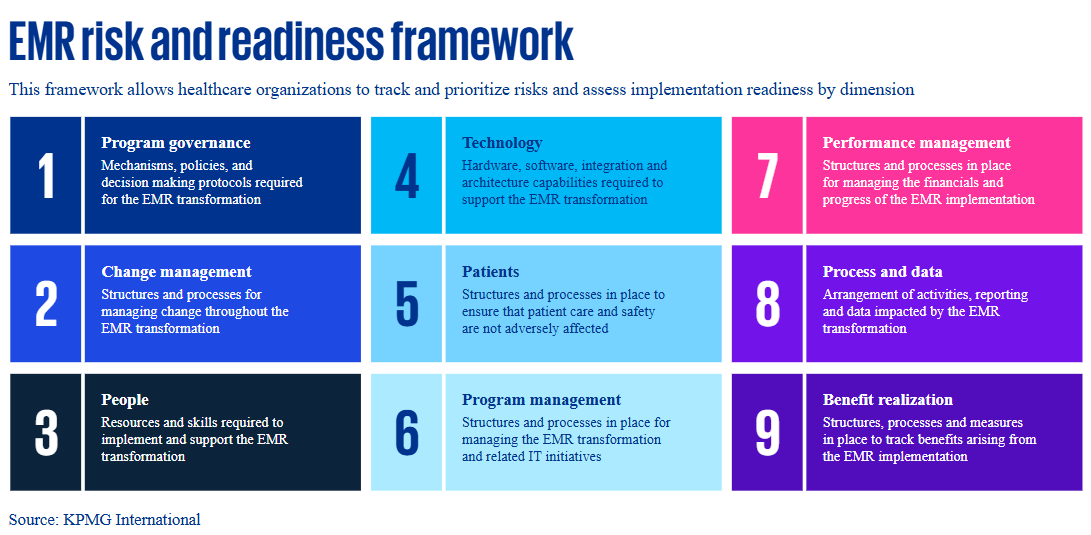With the need for increasing productivity and efficiency in healthcare and the growing role of digital care, the need for a strongly performing electronic medical record (EMR) is pivotal. However, it’s not often an easy journey to get it right the first time. The implementation of an EMR system typically underpins a major organizational transformation that touches nearly every function in a healthcare enterprise.
Electronic medical records support the entire healthcare delivery value chain, from patient registration and appointment scheduling to management and transitions of care to discharge and billing. Having an EMR is also crucial to be ready for the current and forthcoming digitalization of care delivery. Organizational activity in this area has been spurred on by the COVID-19 pandemic. A global survey of 200 healthcare CEOs1 in 2021 found that almost 50 percent of healthcare leaders were fundamentally revising their approaches to electronic health records (EHRs).
Given the complexity and cost associated with EMR implementations, it may be tempting for a healthcare organization to rush an implementation with the intention of making iterative changes down the line. However, shortcuts may not be the best route to choose. Based on KPMG’s experience in supporting these projects worldwide, shortcutting an EMR project can negatively impact benefits realization and lead to broader organizational disruption. In our view, using a robust implementation strategy is key to getting things right the first time and essential in helping to facilitate success, minimize delays, and increase health care worker satisfaction, as well as help decrease the chances of system usability being compromised.2



